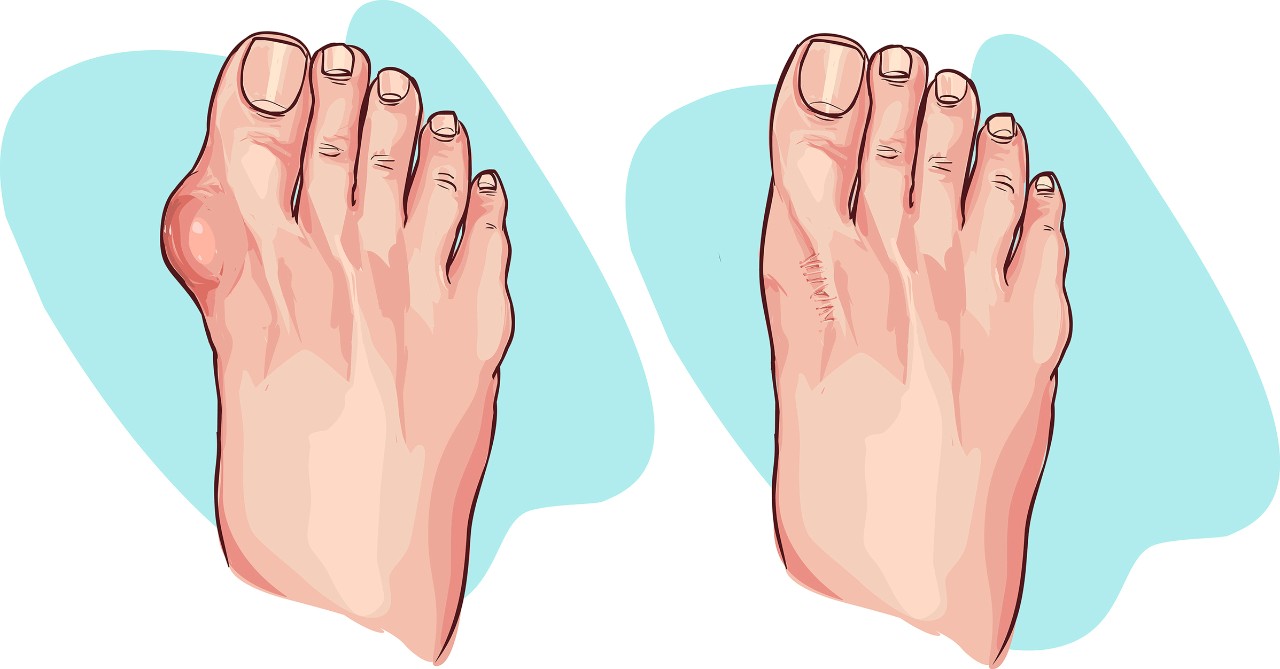How to Get Rid of Gout

About 70 percent of the 8 to 10 million people with gout have recurrent flare-ups. Here’s how to get rid of gout without taking medication and reduce your risk.
Gout, suffered by from 8 to 10 million Americans, is most common among older men but is showing up in women and at younger ages. High cholesterol and alcohol consumption are all risk factors, along with age.
In a land of people taking medications daily to fight the diseases tied to age and bad habits, gout pills are controversial. The American College of Physicians (ACP), one of the nation’s largest and most respected medical associations, recommends against routinely putting patients on long-term medication. But many rheumatologists disagree, prescribing protective drugs as a matter of course for a year or more.
YOU MIGHT ALSO LIKE: How to Get Rid of Corns and Calluses
What does gout look like?
If you have gout, you'll notice extreme swelling wherever it occurs. For instance, one of the knuckles on your finger or toe may balloon or appear lumpy but the others don't. Or all of the fingers on one hand swell, but your other hand is normal. One foot may be swollen, while the other is not. It may also occur in an elbow, wrist, ankle, or knee.
How do you get gout?
In people with gout, uric acid builds up in joints and causes bouts of excruciating pain. Famous chubby sufferers include King Henry VIII of England and Ben Franklin, who missed many meetings held to draft the Declaration of Independence because of his gout. (Thomas Jefferson made sure he saw the documents.)
Gout can also hit people who are trim and fit, like Maurice Cheeks, a former player with the National Basketball Association who began suffering bouts as a coach in his 40s.
About 70 percent of patients have recurrent flare-ups and are treated with a drug called colchicine, nonsteroidal anti-inflammatory drugs (NSAIDs), and corticosteroids. The ACP recommends turning to a short course of corticosteroids first because they have fewer side-effects than NSAIDs and are less expensive than colchicine.
The organization does not endorse keeping new gout patients or people with infrequent flare-ups on other drugs to maintain low uric-acid levels. “It may be the right thing to do in many clinical situations, but we don’t have data to say that with certainty, so we can’t endorse it,” said Robert McLean, MD, a rheumatologist with Northeast Medical Group in New Haven, Conn., and associate clinical professor at the Yale School of Medicine:
One reason is that there’s no placebo-controlled evidence establishing the right target. Pain strikes when the level of uric acid in your blood reaches 6.8 mg/dL or higher. Many rheumatologists aim for levels of 6/mg/dL or lower. Tuhina Neogi, MD, a rheumatologist, epidemiologist, and professor of medicine at Boston University, argues that clinical experience backs that approach.
Other doctors treat according to the patient’s symptoms, not the lab number, as some patients with elevated levels of uric acid in their blood have no symptoms at all.
The debate is occurring while pharmaceutical companies race to capture a fast-growing global market.
“Rheumatologists around the world are upset about the guidelines,” said N. Lawrence Edwards, MD, a longtime gout researcher and program director of graduate medical education at the University of Florida College of Medicine, who also consults for pharmaceutical companies.
How to get rid of gout
Obesity and alcohol raise your uric acid levels, and patients are routinely advised to lose weight and drink less to get rid of gout. The ACP did not find enough evidence to back other changes in diet. Eating meat and seafood can increase your risk of gout, and eating dairy and drinking coffee (including decaffeinated coffee) could help you avoid it, according to an overview of the research, but those studies don’t meet the ACP standards.
You can take non-prescription medicines like aspirin, naproxen, and ibuprofen and use ice to combat the swelling while you rest your joint. If those medicines don't help, your doctor can prescribe medications.
To fight inflammation:
- Indomethacin
- Colchicine
- Corticosteriods
To help your kidneys get rid of uric acid:
- Febuxostat
- Pegloticase
- Probenecid
- Allopurinol
- Lesinurad
How to get rid of gout with home remedies
Among other home remedies for gout, whole cherries, cherry juice, or cherry extract may be backed by the best evidence. One non-placebo but quality study of gout patients found that people who had drank cherry extract within two days had a 45 percent lower chance of an attack. Up to 3 servings over those days was optimal.
But that doesn’t mean you necessarily want to rule out a medication. People in the study who also took the uric-acid reducer allopurinol had a 75 percent lower risk than if they hadn’t taken either. Allopurinol alone helped, but not as much.
Another study compared a group of gout patients drinking cherry juice concentrate against a group drinking pomegranate juice. Only the cherry-juice drinkers experienced significant relief from gout. More than half had not had an attack and had stopped taking their usual NSAIDs within 60 days.
In other research, 36 percent of gout patients who were not taking any medication were attack-free after several months of drinking cherry juice, despite an average blood level of uric acid of 8.7 mg/dl, well above the targets rheumatologists seek.
Updated:
July 11, 2023
Reviewed By:
Christopher Nystuen, MD, MBA